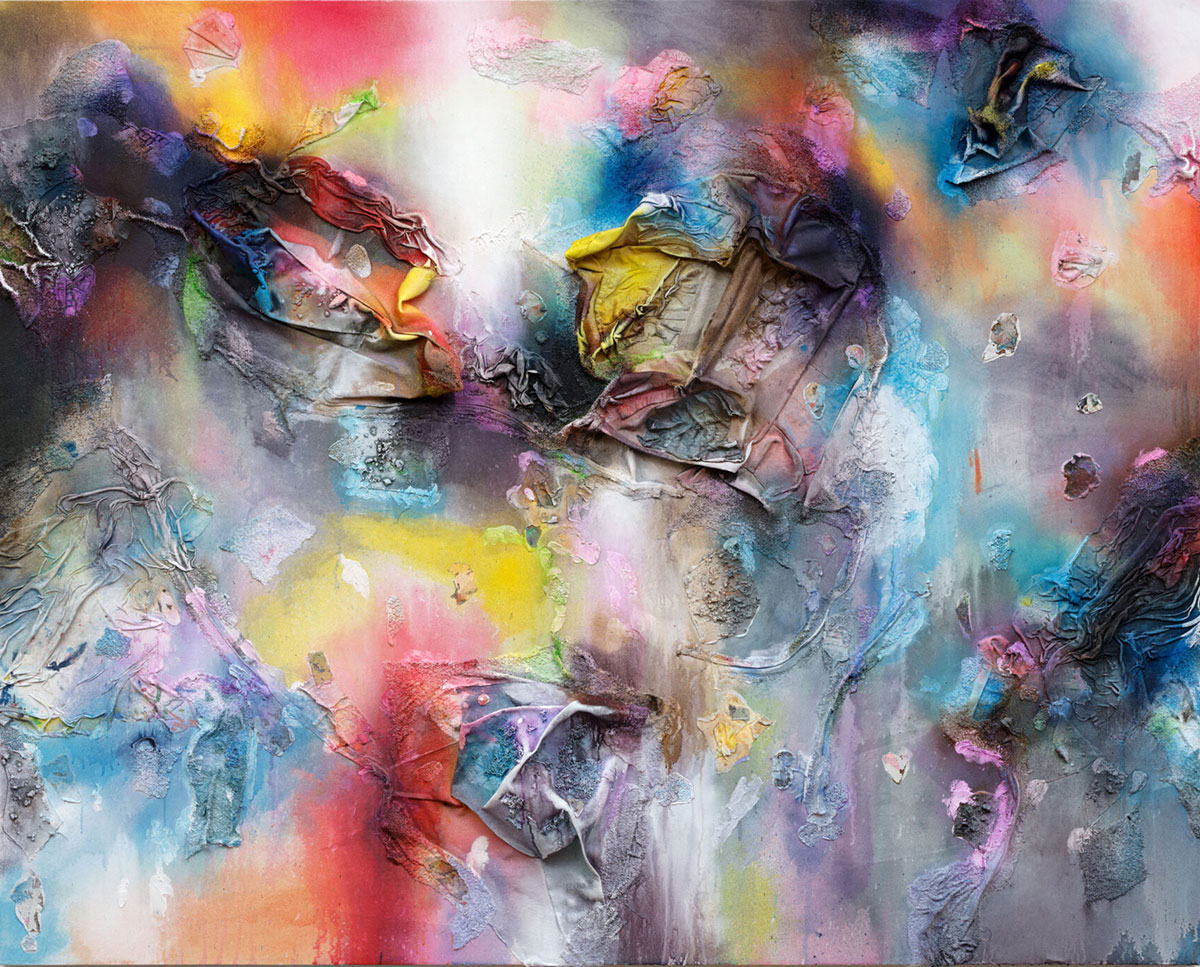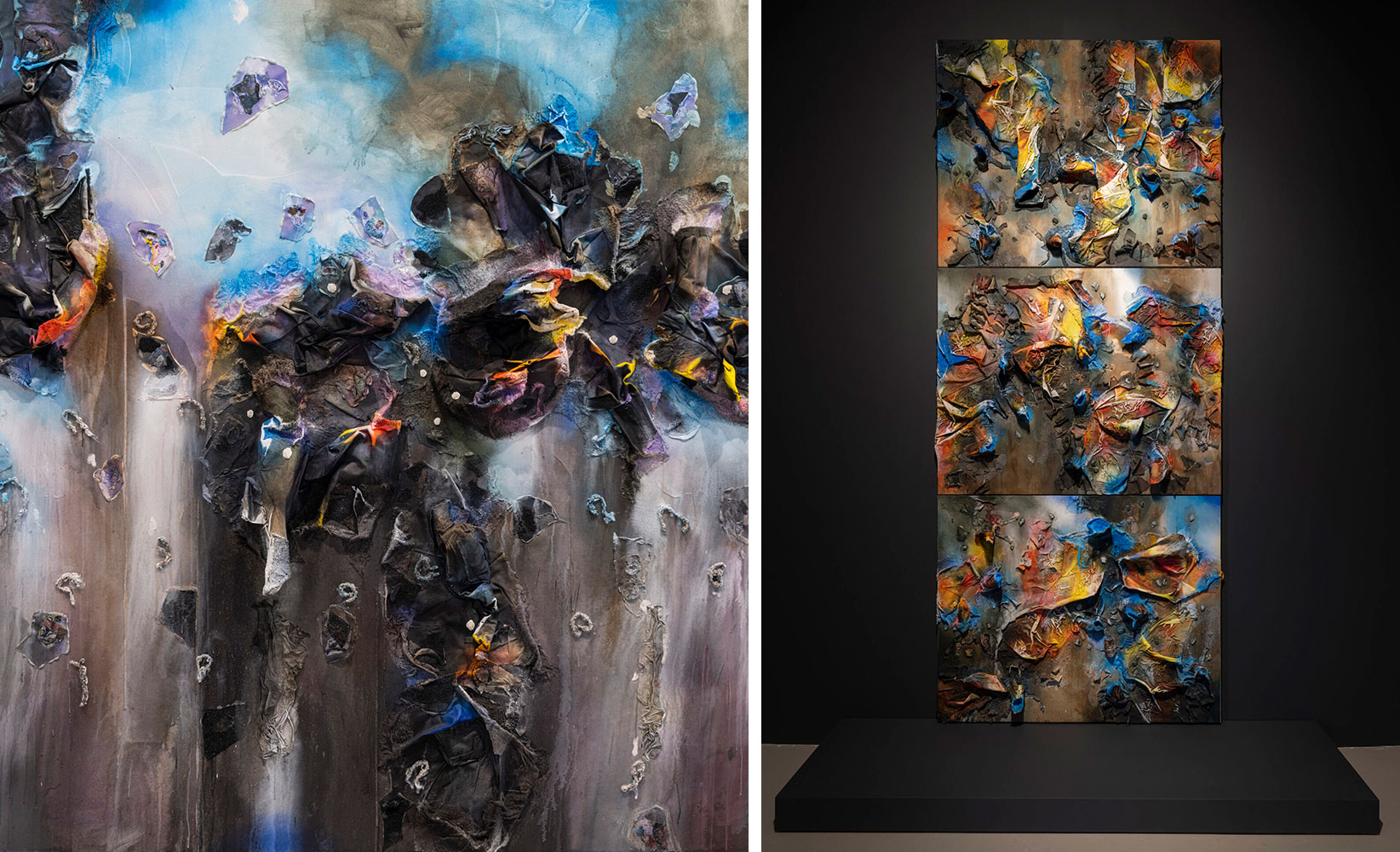PRESENTATION: Leslie Martinez
 Leslie Martinez’s work is heavily influenced by borderland existence. With ancestral ties to the Rio Grande Valley, they frequently navigated a checkpoint on many road trips to and from Dallas and the South Texas-Mexico border. Their encounters in this borderland space guided their interests in considering how racist and xenophobic perceptions of belonging and exclusion relate to the structures of queerness and transness in terms of the required negotiations and coding necessary for survival.
Leslie Martinez’s work is heavily influenced by borderland existence. With ancestral ties to the Rio Grande Valley, they frequently navigated a checkpoint on many road trips to and from Dallas and the South Texas-Mexico border. Their encounters in this borderland space guided their interests in considering how racist and xenophobic perceptions of belonging and exclusion relate to the structures of queerness and transness in terms of the required negotiations and coding necessary for survival.
By Dimitris Lempesis
Photo: MoMA Archive
Leslie Martinez presents his first New York museum exhibition, the presentation debuts new and recent works by the artist, who lived in New York City for fifteen years before returning to Texas in 2019. The exhibition showcases a selection of paintings that range in scale and burst with color, alongside a new series that explores the politics and poetics of the color gray as a boundless state of possibility. Using a cosmic palette based on the CMYK (Cyan, Magenta, Yellow, and Black) color model, Martinez dyes and pleats canvases of pooled paint, an approach that explores place and ancestry in relation to the handmade and draws on formal legacies of abstraction. Born in the Rio Grande Valley near the US-Mexico border, Martinez wields an embodied way of painting that resists colonial notions of “good taste” and instead embraces the concept of rasquachismo*, a resourcefulness embraced out of necessity. Martinez builds on and celebrates generational practices of survival and sustenance learned from their family—who have lived in Texas for generations and worked as farmers, ranchers, seamstresses, and construction workers—by implicating their labor and pride in craft through corporeal paintings brimming with gestural mark making. Both alluring and abject, the works incorporate remains from the studio—including rags and dried acrylics, combining a no-waste approach with methodologies of rasquachismo. Transforming common and often discarded objects into dynamic compositions, Martinez’s paintings reject disposability and invoke a politics of care, one that embraces histories of painting, labor, queerness, and refusal, defying borders and categorization.
* Rasquachismo is a theory developed by Chicano scholar Tomás Ybarra-Frausto to describe “an underdog perspective, a view from los de abajo” (from below) in working class Chicano communities which uses elements of “hybridization, juxtaposition, and integration” as a means of empowerment and resistance. The term is commonly used to describe aesthetics present in the working-class Chicano art and Mexican art movements which “make the most from the least.” It has been described as a worldview, the “view of the underdog, which combines inventiveness with a survivalist attitude.
Photo: Leslie Martinez. The Decorum of this Body. 2023. Acrylic, painting rags, studio clothes, dried paint chips, charcoal, coarse sawdust, pumice on canvas, 60 × 75 × 8″ (152 × 191 × 20 cm). Courtesy Commonwealth and Council. Photo: Paul Salveson
Info: Curator: Elena Ketelsen González, MoMA PS1, 22-25 Jackson Avenue, Long Island City, Queens, NY, YSA, Duration: 16/11/2023-8/4/2024, Days & Hours: Mon, Thu-Fri & Sun 12:00-18:00, Sat 12:00-20:00, www.momaps1.org/



Right: Leslie Martinez. The Foam of a Violent Shake (Don’t Tread on Me). 2023. Acrylic, used studio rags, canvas scraps, used studio clothing, hand towel margins, plastic film stuffing, paper fragments, crushed charcoal, saw dust, pumice, paint chips, modeling paste, wood ashes, mica flakes, mica powder, and iron oxide on canvas. Installation view, Leslie Martinez: The Fault of Formation, on view at MoMA PS1 from November 16, 2023 through April 8, 2024. Image courtesy MoMA PS1. Photo: Kris Graves

Right: Leslie Martinez. The Reconstitution of Rejected and Refracted Voids (detail). 2023. Acrylic, sumi ink, used studio rags, canvas scraps, used studio clothing, plastic film stuffing, polyester sewing threads, paper fragments, mylar balloons, iron silicate, iridescent cellophane, crushed charcoal, paint chips, saw dust, pumice, modeling paste, mica flakes, mica powder, and iron oxide on canvas. Image courtesy MoMA PS1. Photo: Kris Graves

